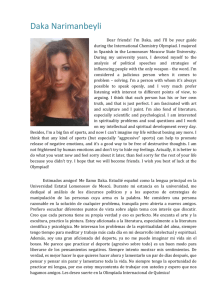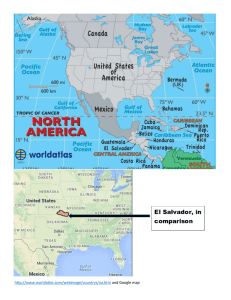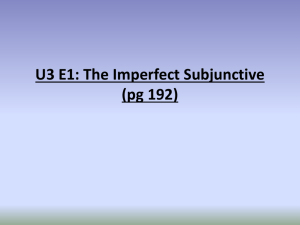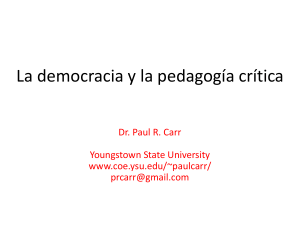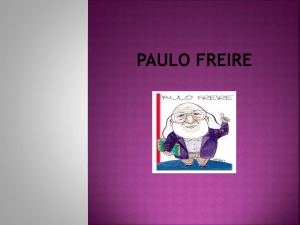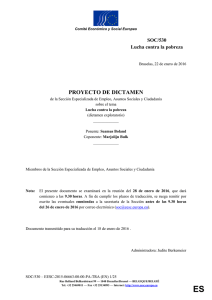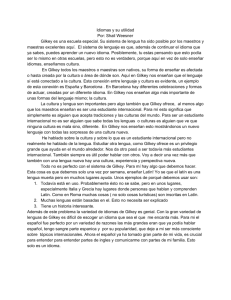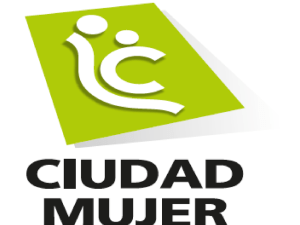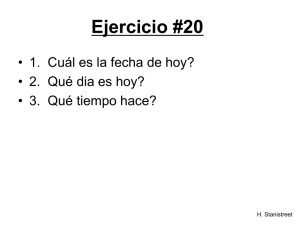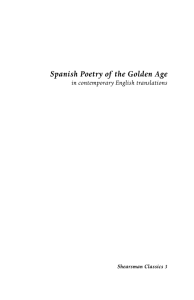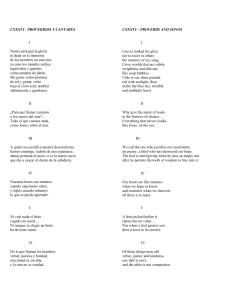Repaso de Estudios Sociales
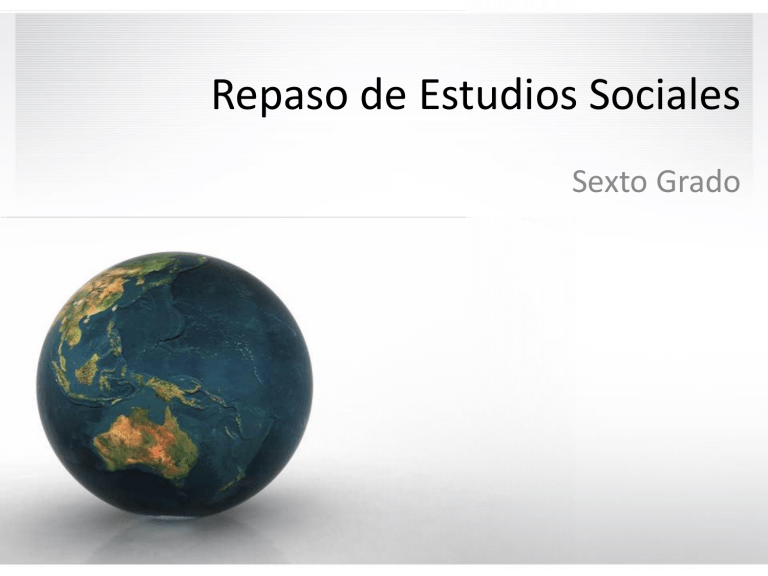
Repaso de Estudios Sociales
Sexto Grado
Recuerden….
El la pagina izquierda tomaran notas.
• Titulo
• Subtitulos
En la pagina derecha crearan graficos, graficos organizadores, collages, etc, sobre el contenido.
• Fotografia
• Orgnizadores graficos como
“T-Charts” “Venn Diagrams”
1. Diferentes tipos de mapas
Mapas:
• Políticos
.
• Los mapas Politcos nombran a los Paises,
Ciudades, Providencias, calles etc
.
• Temático
• Habla sobre un tema. Religion, Languaje
• Físico
• Características físicas
2. Geografia… Accidentes
Geograficos
• Cuales son unas barreras fisicas?
– Cuerpos de agua como oceanos- Cuba el oceano
Atlantico
– Desiertos como el Desierto de Sahara
– Montanas como las montanas Apalaches in E.E.U.U o las Montanas Urales en Europa, etc.
• Nombra barreras politicas.
– Leyes de inmigracion
– Muros/Cercas como La Gran Muralla de China.
3. Donde se estable la gente
• Donde se establecieron las primeras civilizaciones de los E.E.U.U?
• Como sucedió la expansión en los estados unidos de la primeras 13 colonias.
• Describe la expansión de los establecimientos
3. Continua, “Donde se establece la gente?”
• Las primeras civilizaciones se establecieron al largo de los ríos o cerca de la costa de un océano.
• Cerca de los ríos la tierra es fértil.
Si hay tierra fértil, entonces se puede cultivar.
• Tambien pueden tener ganado.
• La gente aprendió que si tienen el recurso de agua cerca, entonces pueden vivir en esa área por mucho tiempo.
En la pagina derecha coloca diferentes lugares donde se estableció la gente, y describe por que escogieron ese lugar. Que recursos naturales tenían ahí?
Al Transcurso del tiempo
Al paso del tiempo, las rutas de agua se empezaron a usar para muchas cosas diferentes.
Son importantes para transportación
Las personas empezaron a moverse, explorar nuevos lugares y a interactuar entre ellos. Ahora diferentes grupos compartieron ideas, y a intercambiar comida, ropa, y muchas otras cosas. La rutas mas importantes se usaron para comprar y vender cosas. (Intercambio). waterways: routes along rivers, lakes, or oceans that are used to get from one place to another
Empezaron a construir sus hogares y hacer caminos marítimos de intercambio.
People began to build their homes where they could be close to food and supplies. Larger towns and cities began to spring up along trade routes. Let's stop for a minute, and think about the locations of some of the major cities, here in the United States.
These cities have one thing in common. They are all near water.
We will also learn why these locations were important to the growth and development of
America .
Many of the oldest and largest cities in America are located along the Atlantic
Ocean, or on harbors. that join the ocean.
For example, New York, Boston and
Baltimore all have harbors. When the United States was being settled, these locations were very important Trade centers. These cities have large ports where ships can load and unload their goods.
From these ports, goods can then move to other locations by land or river. Trade and shipping are very important to the development of towns and cities. Shipping creates jobs, and communities develop around these locations.
4. Interacción humana con el medio ambiente..
• Como los humanos afectan al medio ambiente?
• Deforestación
• Contaminación
• Cambio al medio ambiente( environment) y a los ecosistemas.
• Destrucción de los hábitats de los animales.
5. Difusión Cultural/ Cultural diffusion
Explica como inmigración influye el carácter de lugares y regiones.
• El movimiento de personas de un lugar a otro no lleva a una variedad de interacción de diferente culturas.
• Comparten ideas, tecnología, costumbres y culturas.
• Negativo: Crea inestabilidad, conflictos y la expansión de enfermedades.
• El movimiento de las personas pueden ser restringidas por barreras naturales.
– Pudes nombrar algunos ejemplos?
– Montanas y desiertos.
• El movimiento también puede se restringido por acciones del gobierno.
• Puedes nombrar ejemplos?
– Muros( Paredes) Leyes que restrieguen inmigración o creando campos de refugiados o campamentos que contienen a los ciudadanos.
Personas se mueven un búsqueda de mejores oportunidades para ellos y para sus familias.
•
Cosas negativas de inmigracion.
• Cuando las sociedades interactuan, las culturas cambian, las enfermedades se expanden y las diferencias entre las culturas/religiones producen inestabilidad..
• Nombra ejemplos..
Vocabulario
• Interacion
• Difussion
• Epidemia
• Virus
• Inmunidad
• Transformacion
• Plaga
• Mortalidad
• Outbreak
• Contagioso
6. Inmigración
• Que son los factores de atracción y empuje?
• Como la inmigración influye a un país?
• Explica las formas en cual migración influye el carácter de lugares y regiones.
– The Issue: Explain Ways that Migration Influences the Character of Places and Regions
Migration to different places.
En movimiento..
• Movement and Migration Movement of people from place to place has le to a variety of rich cultural interactions.
Positive reactions, like the sharing of ideas, technology, an customs have enriched cultures. Movement of people also produces conflicts, instability, and the spread of diseases.
• Movement of people can be restricted by natural barriers like mountains and deserts.
• Movement can be restricted by government actions like building walls, making laws to restrict immigration, and confining citizens and refugees to camps.
• People will seek to move if there are advantages for themselves and their families.
Diversidad/ Diversity
• ACCEPTANCE OF DIVERSITY AND
• MULTICULTURAL COMMUNITIES DOES NOT COME EASILY
IN EUROPE
• Ethnic groups that have migrated into western European countries from southwest Asia (called the Middle East in the media), Africa, and other parts of Asia have reversed the old historical trend. Historically, Europeans have migrated to the Americas seeking new opportunities.
• Those European countries are now faced with welcoming and accepting ethnic groups with religious beliefs, customs, and cultural values vastly different than traditional European cultures. Some female Muslim students in Germany, for example, request exemption from co-ed sports and swimming because of religious values.
7. Que es un Cuello de botella?
• Nombra los cuellos de botella de Norte America,
Sudamerica, y Europa/ Rusia.
Puntos de estrangulación.. Cuellos de botella. Trafico marítimo.
8. Los primeros pasos…
• Como las primeras civilizaciones influyeron la cultura de Mexico y latinoamerica..
• Cuales fueron las civilizaciones?
Mayas, Aztecas y Olmecas…
9. El impacto de la Tecnologia
• http://www.timetoast.com/timelines/technologi cal-advances-in-communication
Uso de la Tecnología
• Que ayudo a el presidente ganar la elección?
• Expansión de la comunicación.
– Creación del teléfono-
– La creación de el automóvil
10. Como Guerra Cambia lugares
• Explica como las guerras han cambiado los destinos de los lugares.
• Por ejemplo, Texas fue parte de Mexico y luego de E.E.U.U por causa de guerras, Paises de
Europa cambiaron despues de la Guerra Mundia
I y Guerra Mundia II.
Explica la diferencia entre…
La Revolución de
América(American Revolution)
La Revolución Francesa (French
Revolution)
11. Tipos de gobierno
• Representación de gobierno
• Democracia directa
• Democracia Representativa
• Monarquía
• Republico
• Oligarquía
• Totalitario/ Comando/
• Socialista
12. Historia de la Democracia
• Que civilizaciones influyeron al Sistema de gobierno democratico?
– La palabra democracia de desarrollo en Grecia, y significa mandato de el pueblo.
• Que es Democracia directa?
• Que es Democracia representativa?
Create a T-Chart were you compare and contrast direct democracy and
Direct Democracy.
Popular sovereignty/ Soberenia
Popular.
• Popular sovereignty or the sovereignty of the people is the principle that the authority of the government is created and sustained by the consent of its people, through their elected representatives (Rule by the People), who are the source of all political power
Democracia
A democracy is a form of government in which the people, either directly or indirectly, take part in governing. The word democracy originates from Greek, and means rule of the people. different government systems of the city-states of ancient Greece, including monarchy, oligarchy, tyranny, and democracy. http://www.brainpop.com/socialstudies/worldhistory/democracy/preview.weml
Monarquía
• Monarchy is the oldest form of government in the United Kingdom.
• In a monarchy, a king or queen is Head of State. The British monarchy is known as a constitutional monarchy. This means that, while The
Sovereign is Head of State, the ability to make and pass legislation resides with an elected Parliament.
• Although the British Sovereign no longer has a political or executive role, he or she continues to play an important part in the life of the nation.
• As Head of State, The Monarch undertakes constitutional and representational duties which have developed over one thousand years of history. In addition to these State duties, The Monarch has a less formal role as 'Head of Nation'. The Sovereign acts as a focus for national identity, unity and pride; gives a sense of stability and continuity; officially recognizes success and excellence; and supports the ideal of voluntary service.
•
• In all these roles The Sovereign is supported by members of their immediate family. http://www.royal.gov.uk/monarchuk/howthemonarchyworks/howthemonarchyworks.aspx
• Oligarchy- government by the few, especially despotic power exercised by a small and privileged group for corrupt or selfish purposes.
• Aristotle used the term oligarchia to designate the rule of the few when it was exercised not by the best but by bad men unjustly. In this sense, oligarchy is a debased form of aristocracy, which denotes government by the few in which power is vested in the best individuals.
12.
Indicadores económicos y sistemas económicos.
13.Que sistema económico soy?
Capitalism
• Capitalism is based on private ownership of the means of production and on individual economic freedom. Most of the means of production, such as factories and businesses, are owned by private individuals and not by the government. Private owners make decisions about what and when to produce and how much products should cost. Other characteristics of capitalism include the following:
• Free competition.
The basic rule of capitalism is that people should compete freely without interference from government or any other outside force. Capitalism assumes that the most deserving person will usually win. In theory, prices will be kept as low as possible because consumers will seek the best product for the least amount of money.
• Supply and demand
. In a capitalist system prices are determined by how many products there are and how many people want them. When supplies increase, prices tend to drop. If prices drop, demand usually increases until supplies run out. Then prices will rise once more, but only as long as demand is high. These laws of supply and demand work in a cycle to control prices and keep them from getting too high or too low
14. Que sistema Economico Soy
Socialism/ Socialista
• Socialism, like communism, calls for putting the major means of production in the hands of the people, either directly or through the government.
• Socialism also believes that wealth and income should be shared more equally among people.
• Socialists differ from communists in that they do not believe that the workers will overthrow capitalists suddenly and violently. Nor do they believe that all private property should be eliminated.
• Their main goal is to narrow, not totally eliminate, the gap between the rich and the poor.
• The government, they say, has a responsibility to redistribute wealth to make society more fair and just.
• There is no purely capitalist or communist economy in the world today. The capitalist United States has a Social Security system and a government-owned postal service. Communist China now allows its citizens to keep some of the profits they earn. These categories are models designed to shed greater light on differing economic systems.
15.Cuba es un Pais Comunista..
• Describe que es un país comunista.
Communista/ Communism
• Karl Marx , the 19th century father of communism, was outraged by the growing gap between rich and poor. He saw capitalism as an outmoded economic system that exploited workers, which would eventually rise against the rich because the poor were so unfairly treated. Marx thought that the economic system of communism would replace capitalism. Communism is based on principles meant to correct the problems caused by capitalism.
• The most important principle of communism is that no private ownership of property should be allowed. Marx believed that private ownership encouraged greed and motivated people to knock out the competition, no matter what the consequences.
• Property should be shared, and the people should ultimately control the economy.
• The government should exercise the control in the name of the people, at least in the transition between capitalism and communism. The goals are to eliminate the gap between the rich and poor and bring about economic equality.
16.Que sistema soy?
Tradicional/ Traditional
• Que es un sistema económico tradicional..
17.Cual es la diferencia de
Agricultura de subsistencia y
Agricultura comercial?
Agricultura de subsistencia
Agricultura comercial/ Commercial
Farming.
18. Cottage industry vs comercial industry
19.Que sistema económico soy?
• Allows private enterprise to run most business.
• Then the governments intervene in certain areas of the economy, such as regulation, and spending money on public services.
Mixed Economy
• •A mixed economy means that part of the economy is left to the
free market, and part of it is run by the government.
• •In reality most economies are mixed, with varying degrees of state intervention.
• •Mixed economies start from the basis of allowing private enterprise to run most business. Then the governments intervene in certain areas of the economy, such as regulation, and spending money on public services.
20. Compara..
20. Continua..
21. Indicadores económicos y sistemas económicos.
• PIB/ GDP-
• PIB per Cápita/ GDP per Capita
• Tasa de Alfabetización/ Literacy Rate
• Mortalidad infantil/ Infant Mortality Rate
• Esperanza de Vida/ Life Expectancy
• Estandar de Vida/ Standard of Life
• Nivel de Tecnologia/ Technology level
22. Nivel de desarrollo de un país.
• Usando los indicadores económicos de puede entender el nivel de desarrollo de un país. Un país puede ser…
Un País Desarrollado
– Tiene un alto PIB y PIB per cápita, El Pais y las personas( familias) ganan un mucho dinero al ano, (PIB per Cápita alrededor de$35, 000 al ano)
–
– Mortalidad infantil es baja- Un bajo nivel de bebes que mueren al nacer o un poco después del nacer.
– Tasa de alfabetización es alta, -la mayoría de las personas saben leer y escribir (99%)
– la esperanza de vida es alta, - Se espera que la mayoría de las persona lleguen a vivir por mas tiempo- Ex. Mujeres 87- hombres 85)
– alto nivel de tecnología – el país tiene un alto nivel de tecnología, la mayor parte de las personas tienen celulares, computadoras, televisores o radios.
–
– Estándar de Vida es alto (Alto nivel de Clases sociales) – las comodidades de las personas van mas allá de las necesidades básicas. (Tienen todas las necesidades como comida, hogar y ropa, mas lujos.)
Un país recién industrializado
– Un país recién industrializado, esta en vías tener los indicadores como un país desarrollado.
Un país subdesarrollado
– Un país subdesarrollado es un país del tercer mundo, que quiere decir que es un país muy pobre. Usualmente tienen
– Un bajo PIB/per Cápita- Las personas usualmente ganan muy poco.. ($3,000 al ano)
– una baja tasa de alfabetización- bajo porcentaje de las personas que saben leer y escribir)
– en nivel de mortalidad infantil muy alto, (el nivel de bebes que mueren es alto indicando que no hay un cuidado de salud adecuado)
– bajo estándar de vida, ( Es difícil satisfacer sus necesidades básicas- usual mente no tienen comida, agua o un hogar estable.)
– esperanza de vida muy baja (alrededor de los 64 anos)
Religión
Christianity
Christianity is one of the world's major religions.
These links tell you more about the worship of Jesus
Christ.
Islam
"There is no God but Allah, and Muhammad is his
Prophet." This is the mantra of Islam, a religion that spans the globe in membership. These sites will broaden your understanding of this major religion.
Judaism
The first monotheistic (one God) religion, Judaism traces its roots back thousands of years. Find out more about this ancient religion, which is still thriving today.
• Taoism/Daoism
• Taoism or Daoism is a philosophy based on the Tao, or "the way." An ancient Chinese religion, it still thrives today.
• Chinese Mythology/Religion
• Your About Guide to Ancient/Classical History gives you a primer on what people in ancient China believed about themselves, their surroundings, and their destinies. What you find may surprise you.
• Confucius Resources
• Confucius was one of the world's most respected philosophers--for a time. His ideas shaped the growth of Chinese civilization. Find out all about this fascinating figure in ancient Chinese history.
• History of Hinduism
• Hinduism paints a picture of ancient India and its first great religion, Hinduism. Find out how this belief system dominated much of the lives of these ancient peoples.
• Buddhism 101
• Buddhism began in India
• Buddha.
• http://www.ushistory.org/gov/13b.asp
• ( http://encyclopedia.kids.net.au
)
